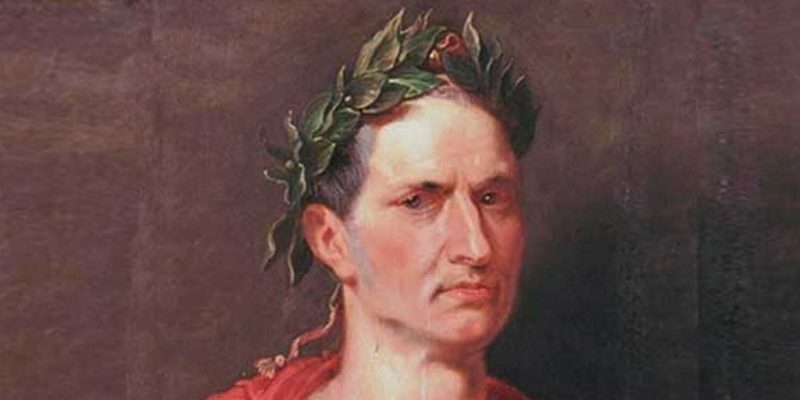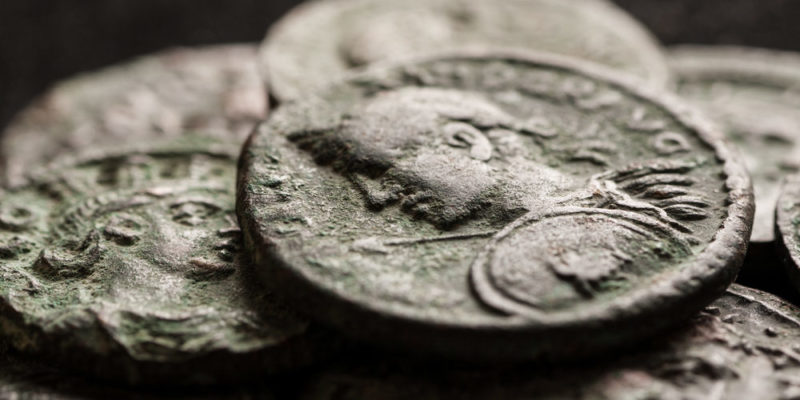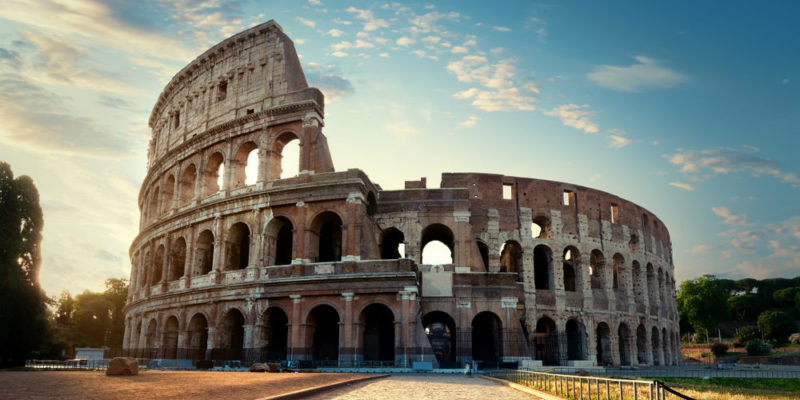We explain what the Roman Empire was, its characteristics and the dynasties that reigned. In addition, the fall of the empire and its contributions.
What was the Roman Empire?
The Roman Empire was the last of the three stages of Roman civilization 's development of government , beginning in 27 BC. C. and ended in 476 d. C. The first stage was the Monarchy (753 BC – 509 BC) and the second the Republic (509 BC – 27 BC).
The period of the Roman Empire was considered as "the golden ages" because Rome established itself as the dominant power over the Mediterranean Sea , North Africa , West Asia and Southwest Europe .
The Empire was characterized by an autocratic government in which administrative, political, military and religious powers were in the hands of a single person, the emperor, who was not regulated by any other authority.
Characteristics of the Roman Empire
The Roman Empire was characterized by:
- The figure of the emperor who had the absolute power of the government .
- A mighty army trained for war.
- A system of law originating during the Republic that was consolidated as the discipline of Roman law during the Empire.
- The unprecedented sophisticated development of highways , which streamlined transportation for various functions, such as commerce , mail, agriculture, the movement of people, among others.
- A system of pipes for wastewater that achieved hygiene standards never reached by other civilizations.
- Latin , the language of the Romans, which was one of the most important contributions.
Dynasties of the Roman Empire

In the Roman Empire, four great dynasties ruled that formed the period called the High Empire. These were:
Julio-Claudian dynasty (27 BC – 68 AD).
- Octavian Augustus. The first emperor of Rome was Octavian Augustus and he had the longest reign, from 27 BC. C. to 14 d. C., in which he managed to expand the Empire. His assumption represented the end of the Republic and the beginning of an era of peace, although border wars were constant.
- Tiberius. He ruled from 14 d. C. until 42 d. C. It was characterized by reforming the military law and creating new heavy infantry corps. However, his reign declined due to chaos and wars.
- Caligula. He was the third emperor and ruled from 42 to 41. The few data found focus more on his sick personality, of unprecedented cruelty, rather than on his performance as emperor. He was stabbed to death during a play.
- Claudius. He ruled from 41 to 54. He turned out to be a great ruler and military strategist, loved by the Roman people after developing good government administration. However, there are suspicions surrounding his death, whether it was due to illness or poisoning.
- Nero. He was the adoptive son of Claudio. With only 17 years of age he assumed the reign and ruled from 54 to 68.
- Vespasian. After the death of Nero and after several civil wars, the commander Vespasian took power from 69 to 79. He was the precursor that gave rise to a caste of Flavian emperors that was the shortest of all the dynasties.
- Titus. He ruled from 79 to 81 and stood out for the infrastructure development of public buildings, such as the Flavian amphitheater known as the Colosseum. He died after two years of reign.
- Domitian. Brother of Tito, he ruled from 81 to 96 and was one of the most hated emperors by the Roman people, considered a cruel and paranoid tyrant.
Nerva-Antonino dynasty (96 – 192 AD).
It was the period that represented the heyday of Rome with the largest extension of territory and known as "the golden age of Rome" in which the rulers stood out for the moderate use of power.
- nerve. He was the forerunner of this dynasty that ruled from 96 to 98 and was considered wise and moderate in his actions.
- Trajan. He ruled from 98 to 117 and was characterized by promoting development in the city and building numerous buildings and monuments, such as the Trajan Forum and Trajan Market.
- Hadrian. He reigned from 117 to 138 and stood out for promoting numerous reforms in the fiscal system, in the slave laws and in the length of sentences. Unlike all other emperors, he carried out few military operations.
- Commodus of Ceylon. He reigned from 138 to 161 and a peaceful government resulted, except for a military disturbance against the British brigands, for which he decided to build the Antony Wall.
- LuciusVerus. He reigned from 161 to 169 together with Marcus Aurelius, which meant the first of the governments with multiple emperors simultaneously. He died of a stroke after bringing the great plague to the city of Rome, which was one of the greatest epidemics of antiquity.
- Marcus Aurelius. He ruled from 161 to 169 together with Lucius Verus, in a period that resulted from constant warfare. He was then in command alone from 169 to 177. He was an outstanding commander and lived a modest life. He implemented reforms in administration and civil law. He was the last of the “five good emperors of Rome”. From 177 to 180 he ruled together with Commodus.
- Comfortable. From 180 to 192 he reigned alone and was an out-of-control degenerate who implemented a cruel tyranny . He ended up assassinated as a result of a conspiracy against him to end the chaos. From that moment, Rome lost strength and did not have other rulers like the so-called "five good emperors of Rome".
- Septimius Severus. Following the assassination of Commodus who had no heirs, Septimius Severus took over by force in the midst of numerous civil wars. He ruled from 193 to 198, in an attempt to continue the old dynasty. Later, he reigned together with Caracalla from 198 to 209 and, in addition, with Geta from 209 to 211.
- Caracalla. He ruled together with Severana from 211 to 217 and was notable for granting Roman citizenship to all the inhabitants of the empire. However, he turned out to be a despotic and cruel emperor.
- Macrinus. He was the last emperor of the Severan dynasty and ruled from 217 to 218. He previously served the emperor Caracalla in civil matters but, in the end, he had him assassinated to protect his own life. That was how he came to power. He died in battle against the rebels in 218.
In addition, they ruled three other smaller dynasties that made up the period called the Late Empire. These were:
- Constantinian dynasty (337 – 388 AD). He had several emperors: Constantius I, Galerius and Severus II, Constantine I the Great, Licinus, Maximus Daya, Valerius Valens, Martinianus, Constantine II, Constantius I, Constantius II, Constantius, Magnenius, Vetranium, Nepocianus, Julian the Apostate and Jovian.
- Valentinian dynasty (379 – 395). It had four emperors: Valentiniano I, Flavio Graciano, Valentiniano II and Magno Máximo.
- Theodosian dynasty (395 – 476). It had several emperors: Theodosius I, Arcadius, Honorius, Constantius III, Joannes, Valentinian III, Petronius Maximus, Avitus, Majorianus, Libio Severus, Anthemius, Olibrius, Glycerius, Julius Nepos and Romulus Augustus.
economy of the roman empire

The economy of the Roman Empire was based on agriculture , with the work of peasants and slaves, and trade that intensified as the empire expanded its territories.
The fall of the Roman empire
The last emperor of Rome was Romulus Augustus who ruled from 475 to 476 when he was only 15 years old. Paradoxically, he bore the same name as the founder of Rome, Romulus, and the first emperor, Augustus. He was captured and executed by Odoacer , chief of the Germanic tribe of Herulian origin, who seized power by force and ended the period of the Roman Empire.
Contributions of the Roman Empire

Among the main contributions of the Roman Empire are:
- The development of sophisticated road systems that were of great contribution to the expansion of the empire.
- The system of laws that was the basis of today's legal system.
- The Julian calendar created by Julius Caesar in 46 BC. C. which is based on the duration of a solar year.
- The Latin that was the basis of various languages , such as Spanish, French, Italian, Galician, Romanian, Portuguese, among others.
- The division of powers in different political institutions, including the Senate.
- The Roman numeral system created in 850 B.C. c.
- The sophisticated advances in the construction of aqueducts that made it possible to transport fresh water to the city and maintain cleanliness.
- The sewers and drains , based on a system of sewers that ran alongside the streets and flowed into the Tiber River.
- The concrete base for the construction of buildings , for example, in the Pantheon and the Colosseum, which allowed them to remain partially standing until today.
- The advances in medicine inherited from the Greeks, to which they added, the development of military hospitals and the sanitation system that had an impact on health.
Luke is passionate about fostering student involvement and connection. He studied psychology for his major and likes learning about the past. Luke aims to specialize in artificial intelligence and cybersecurity. .
Leave a reply
Your email address will not be published. Required fields are marked *Recent post

Sport: What Is It, Types, Risks, Features, Characteristics and Examples

Dogs: Emergence, Features, Characteristics, Feeding and Breeds

Story: Definition, Elements, Structure, Features and Characteristics

